worls war ii
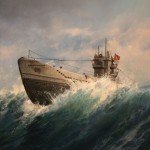 Submarines have been around a long time, but during the world wars, Germany built a submarine that was superior to any other submarine of the time. Called the U-Boat, the name was short for Unterseeboot, or under sea boat. Winston Churchill said, “the only thing that ever really frightened me during the war was the U-boat peril.” Churchill identified the threat that the U-Boats posed. The Atlantic Lifeline was vital to Britain’s survival. If Germany had been able to prevent merchant ships from carrying food, raw materials, troops and their equipment from North America to Britain, the outcome of World War II could have been very different. Britain might have been starved into submission, and her armies would not have been equipped with American built tanks and vehicles. The U-Boats were a serious threat. The Battle of the Atlantic was a must win situation. If Germany won that battle, Britain would likely have lost the war.
Submarines have been around a long time, but during the world wars, Germany built a submarine that was superior to any other submarine of the time. Called the U-Boat, the name was short for Unterseeboot, or under sea boat. Winston Churchill said, “the only thing that ever really frightened me during the war was the U-boat peril.” Churchill identified the threat that the U-Boats posed. The Atlantic Lifeline was vital to Britain’s survival. If Germany had been able to prevent merchant ships from carrying food, raw materials, troops and their equipment from North America to Britain, the outcome of World War II could have been very different. Britain might have been starved into submission, and her armies would not have been equipped with American built tanks and vehicles. The U-Boats were a serious threat. The Battle of the Atlantic was a must win situation. If Germany won that battle, Britain would likely have lost the war.
From 1918 on, Germany was not supposed to have submarines or submarine crews. However, no checks were in place to stop any research into submarines in Germany and it became clear that during the 1930’s, Germany had been investing time and men into submarine research. Their research and subsequent development of the U-Boat made it a submarine that was very difficult to locate and that made it extremely dangerous. They developed the Enigma machine, which was a series of electro-mechanical rotor cipher machines developed and 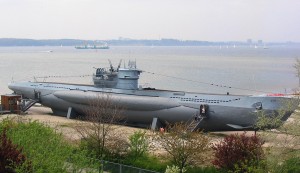 used in the early to early-mid twentieth century for commercial and military usage. Enigma was invented by the German engineer Arthur Scherbius at the end of World War I. The codes it could provide were difficult to decipher. German military messages enciphered on the Enigma machine were first broken by the Polish Cipher Bureau, in December 1932. This success was a result of efforts by three Polish cryptologists, Marian Rejewski, Jerzy Rózycki and Henryk Zygalski, working for Polish military intelligence. Rejewski reverse-engineered the device, using theoretical mathematics and material supplied by French military intelligence. Then, the three mathematicians designed mechanical devices for breaking Enigma ciphers, including the cryptologic bomb. In 1938, the Germans made the machine more complex, and increased complexity was repeatedly added to the Enigma machines, making decryption more difficult and requiring further equipment and personnel. It was more than the Poles could readily produce.
used in the early to early-mid twentieth century for commercial and military usage. Enigma was invented by the German engineer Arthur Scherbius at the end of World War I. The codes it could provide were difficult to decipher. German military messages enciphered on the Enigma machine were first broken by the Polish Cipher Bureau, in December 1932. This success was a result of efforts by three Polish cryptologists, Marian Rejewski, Jerzy Rózycki and Henryk Zygalski, working for Polish military intelligence. Rejewski reverse-engineered the device, using theoretical mathematics and material supplied by French military intelligence. Then, the three mathematicians designed mechanical devices for breaking Enigma ciphers, including the cryptologic bomb. In 1938, the Germans made the machine more complex, and increased complexity was repeatedly added to the Enigma machines, making decryption more difficult and requiring further equipment and personnel. It was more than the Poles could readily produce.
Finally there was a breakthrough. The astonishing achievements of the codebreakers of Bletchley Park saved countless lives. At their peak, there were 12,000 codebreakers at Bletchley Park, 8,000 of them women. The codebreakers helped bring victory in North Africa by giving British commander General Montgomery details of 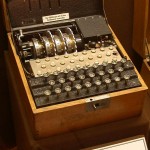 Erwin Rommel’s battle plans and providing the routes of the Nazi supply convoys. This allowed the Royal Navy the opportunity to sink them. Prior to the codebreakers, the U-Boats were only sunk after damage or near damage was done to other ships. Such was the case with the first sinking of a U-Boat. German submarine U-39 was a Type IXA U-boat of the Kriegsmarine that operated from 1938 to the first few days of World War II. On 14 September 1939, just 27 days after she began her first patrol, U-39 attempted to sink the British aircraft carrier HMS Ark Royal by firing two torpedoes at her. The torpedoes malfunctioned and exploded just short of the carrier. In retaliation, U-39 was immediately hunted down by three British destroyers. She was disabled with depth charges, and subsequently sunk. All crew members survived and were captured.
Erwin Rommel’s battle plans and providing the routes of the Nazi supply convoys. This allowed the Royal Navy the opportunity to sink them. Prior to the codebreakers, the U-Boats were only sunk after damage or near damage was done to other ships. Such was the case with the first sinking of a U-Boat. German submarine U-39 was a Type IXA U-boat of the Kriegsmarine that operated from 1938 to the first few days of World War II. On 14 September 1939, just 27 days after she began her first patrol, U-39 attempted to sink the British aircraft carrier HMS Ark Royal by firing two torpedoes at her. The torpedoes malfunctioned and exploded just short of the carrier. In retaliation, U-39 was immediately hunted down by three British destroyers. She was disabled with depth charges, and subsequently sunk. All crew members survived and were captured.
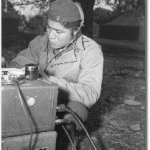 In a war, secrecy is vital. The different sides must take whatever steps necessary to inform their troops and allies of their next step, without revealing the plan to the enemy. In World War II, America and her allies were having trouble with the level of secrecy they were able to achieve. It seemed that no matter what code they used, it was broken almost immediately. It did not help matters that many of the Japanese cryptographers had been educated in the United States. They spoke very good English, and they were very amazingly adept at breaking top secret military codes. For America and her allies, coming up with newer and more complicated codes was becoming more and more difficult, and the Japanese cryptographers seemed to break the new codes almost as quickly as they were developed. They were in real trouble. Then someone remembered a type of code that had been used in World War I, and things began to look up a little for America and the allies. The code was the use of Code Talkers from the Choctaw tribe.
In a war, secrecy is vital. The different sides must take whatever steps necessary to inform their troops and allies of their next step, without revealing the plan to the enemy. In World War II, America and her allies were having trouble with the level of secrecy they were able to achieve. It seemed that no matter what code they used, it was broken almost immediately. It did not help matters that many of the Japanese cryptographers had been educated in the United States. They spoke very good English, and they were very amazingly adept at breaking top secret military codes. For America and her allies, coming up with newer and more complicated codes was becoming more and more difficult, and the Japanese cryptographers seemed to break the new codes almost as quickly as they were developed. They were in real trouble. Then someone remembered a type of code that had been used in World War I, and things began to look up a little for America and the allies. The code was the use of Code Talkers from the Choctaw tribe.
That someone was war analyst Philip Johnston. Phillip, an American who fought in World War I, stationed in France, was too old to fight in World War II, but he wanted to aid in the effort anyway. As a boy, he spent time 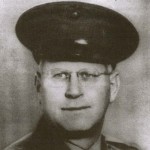 on the Navajo Indian Reservation, where his parents were Protestant missionaries. He learned to speak the Navajo language with his playmates. Suddenly, the idea of a secret military code based on the Navajo language made perfect sense to him.
on the Navajo Indian Reservation, where his parents were Protestant missionaries. He learned to speak the Navajo language with his playmates. Suddenly, the idea of a secret military code based on the Navajo language made perfect sense to him.
In mid-April of 1942, Marine recruiting personnel went to the Navajo Reservation, and presented their plan. They enlisted thirty volunteers from the agency schools at Fort Wingate and Shiprock, New Mexico and Fort Defiance, Arizona. It would be a tall order for these volunteers. Each one had to be fluent in Navajo and English, but they also had to be physically fit, because they would be messengers in a combat zone. They were told that they would be specialists in the United States as well as over seas. Some of them were underage, but birth records on the Reservation were not well kept, so it was easy for volunteers to lie about or just not know their true age, and so they could participate. Carl Gorman, a 36-year-old Navajo from Fort Defiance, was too old to be considered by the Marines, so he lied about his age in order to be accepted.
Because the Navajo language was complicated, and due to the many different dialects, the Japanese could 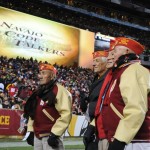 never crack the code. They even captured a Navajo soldier and made him listen to the talk for hours, but because he had not been trained, he was still unable to crack the code. By 1945, there were about 540 Navajos who served in the Marines, and of those 375 to 420 were trained as code talkers. The rest served in other capacities. The code talkers payed an instrumental part in the success of the war effort. On June 4, 2014, Chester Nez, the last living original code talker, passed away. Once, in an interview he said, “My first transmission—one that did not involve coordinates—was one I will always remember: Beh-na-ali-tsosie a-knah-as-donih ah-toh nish-na-jih-goh dah-di-kad ah-deel-tahi, which translates to: Enemy machine gun nest on your right flank. Destroy.” These were great men, and our nation owes them a debt it can never repay.
never crack the code. They even captured a Navajo soldier and made him listen to the talk for hours, but because he had not been trained, he was still unable to crack the code. By 1945, there were about 540 Navajos who served in the Marines, and of those 375 to 420 were trained as code talkers. The rest served in other capacities. The code talkers payed an instrumental part in the success of the war effort. On June 4, 2014, Chester Nez, the last living original code talker, passed away. Once, in an interview he said, “My first transmission—one that did not involve coordinates—was one I will always remember: Beh-na-ali-tsosie a-knah-as-donih ah-toh nish-na-jih-goh dah-di-kad ah-deel-tahi, which translates to: Enemy machine gun nest on your right flank. Destroy.” These were great men, and our nation owes them a debt it can never repay.

